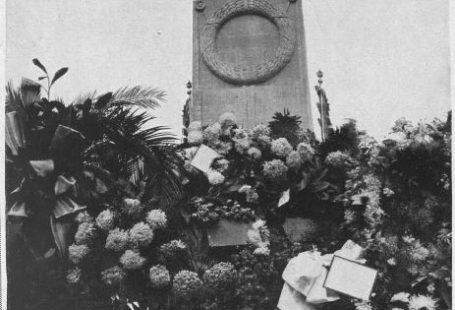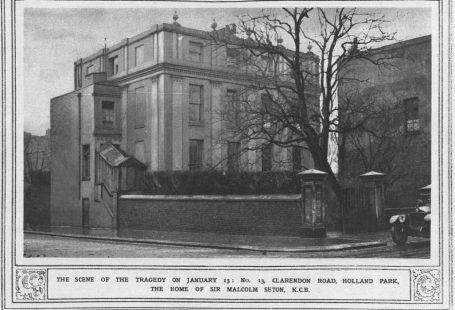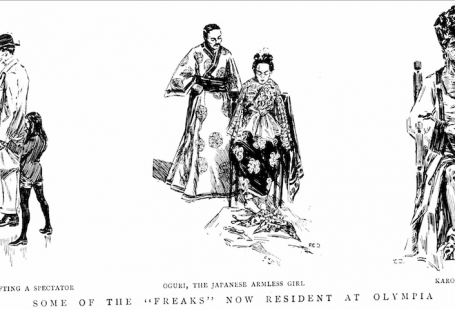‘No more thrilling a tale of guilt and crime, and scarcely one so eloquent in its lessons and cautions to those who are in danger of entering upon a life of unbridled passion, is to be found in all the history of poor humanity than this story of William Palmer.’
So reads an article in the Sheffield Independent, 17 September 1888, regarding one William Palmer, better known as the Rugeley Poisoner. William Palmer, a former doctor, was convicted in 1856 for the murder of his friend John Cook the year before, and newspapers at the time and in the years following held his story up as kind of morality tale, warning of the dangers and implications of gambling.
Sheffield Independent | 17 September 1888
‘Vice, gambling, fraud, murder, these were Palmer’s stepping-stones to the scaffold,’ the Sheffield Independent continues in its piece entitled ‘A Race to Ruin.’ But who exactly was William Palmer? And what drove him to the murder of his close friend? In this special blog, we explore the fascinating story of William Palmer using contemporary articles from the British Newspaper Archive, as well as pieces published in the years after his crimes were committed.
Want to learn more? Register now and explore The Archive
A Wild Young Man
For anybody wanting to read a full account of William Palmer’s life, the Illustrated Times in February 1856 published a thorough piece called ‘The Rugeley Tragedies.’ It describes how William Palmer was born in Rugeley in 1821 and soon was apprenticed to a surgeon in the town, one Mr Tylecote. Even with this respectable profession, Palmer had ‘the reputation of being a wild young man, with plenty of money to spend, and with indulgent parents, who never attempted to rule him.’
Rugeley, Staffordshire | Illustrated Times | 2 February 1856
It was precisely this so-called wildness that caused Palmer to stray away from ‘the quiet profession of medicine for the exciting pursuit of betting on the turf.’ The Penny Illustrated Paper, in an article titled ‘Celebrated Poisoners,’ relates how William Palmer turned his back on medicine in order to concentrate on gambling on racing, meaning that he ended up ‘ruined.’
So by 1855, Palmer found himself in rather dire financial straits. The Illustrated London News relates in 1912 the fraudulent lengths to which the former doctor was prepared to go in order to reverse his fortunes:
He had borrowed £20,000 in bills at sixty per cent – and forged his mother’s name to all the bills. He had also insured his brother’s life for £13,000, and his brother happened to die very conveniently in August, 1855. But the insurance office declined to pay.
William Palmer | Lichfield Mercury | 22 December 1994
It is suspected, but not proved, that William Palmer poisoned his brother in order to secure the life insurance money – the modus operandi of another famous Victorian poisoner, Mary Ann Cotton. But soon, another opportunity presented itself.
A Young Sporting Fool
William Palmer was friends with a younger man named John Cook, who shared his passion for racing and owned race horses. The Illustrated London News presents a rather unflattering portrait of Cook, ‘a common sample of the young sporting fool with a few thousands to waste.’ But on the 13 November 1855, Cook’s horse Polestar came good, winning a race at Shrewsbury and netting his owner nearly £3,000.
The Illustrated Times paints a vivid picture of the ensuing celebrations. Cook ‘gave dinner at the Raven, Shrewsbury,’ on the following day, and:
After indulging freely in the foreign wines of an English country town…the owner of Polestar took to brandy and water to restore his British solidity. Tossing off his glass, he complained that there was something in it which burned his throat. That night he was very sick and very ill.
Now, the strangest aspect of this case is that Cook was immediately suspicious as to the cause of his illness. The next day he deposited some of his money with a friend, Ishmael Fisher, ‘expressing his belief that Palmer had ‘dosed’ him for the sake of his money.’ But did Cook sever all ties with his friend? Not in the slightest. The pair returned to Rugeley thick as thieves. Cook continued to display signs of a mystery illness, through which Palmer nursed him.
A view of Rugeley in 1856 | Illustrated Times | 2 February 1856
Over the next couple of days Cook was ‘in agony,’ although he took ‘coffee and broth from his friend.’ Meanwhile, on the 20th November Palmer headed to a chemist’s shop in Rugeley and bought strychnine, a strong poison lethal in even the smallest of doses. On the same day, an elderly doctor named Bamford (he was 82) visited Cook and prescribed two opiate pills. But these pills did not reach their intended recipient directly. No, indeed, Palmer took the pills, and ‘a terrible scene…ensued.’
‘Wildly shrieking, the patient tossed about in fearful convulsions,’ and soon, Cook passed away. Palmer incited Bamford to label Cook’s cause of death as apoplexy, and even tried to steal a jar containing Cook’s stomach contents once his body had been sent for autopsy. Despite the enactment of these desperate measures, William Palmer was arrested and put on trial.
A Foul Murder
At the trial, many experts were called to give evidence relating to Cook’s condition and his cause of death. Some thought it was possible that Cook had died from tetanus, given that he was exhibiting some of that disease’s symptoms. Strychnine, however, also has a similar affect as tetanus. But no strychnine was found in the deceased’s body – even still, it was judged that Cook had been murdered.
Indeed, the judge in this case urged the jury to consider the ‘moral evidence.’ Palmer had used the deceased’s money, and had tried to cover up his crimes. And so, ‘link by link an irresistible chain of evidence wound round Palmer…[and] indisputably it was proved that Palmer was the man who poisoned his friend.’ ‘Never,’ further commented the Penny Illustrated Paper, ‘was a foul murder more conclusively bought home to any murderer.’
The Trial of William Palmer | Penny Illustrated Paper | 5 August 1876
The jury found William Palmer guilty of murder, and he was executed on 14 June 1856 at Stafford Prison. Many also believe him guilty of the murder of his brother and mother-in-law, as well as four of his own children.
With all the accounts from our newspapers, it is clear to see that there was something decidedly off about Palmer. The Illustrated Times goes so far as to claim that his fondness for ‘fatal drugs’ led to him naming one of his horses Strychnine. It alludes to his ‘peculiarly fascinating manners when in the society of women,’ but how he was also ‘always popular with the poor.’
Indeed, the Penny Illustrated Paper observes how ‘Palmer looked in the prisoner’s box little like a man who had committed murder.’ Perhaps the last word should go to Mrs Emma Price of Rugeley, who died in 1945 aged 101. It was alleged by the Evening Despatch that she was the last living person with recollections of William Palmer, and the newspaper reports:
At the age of six Mrs Price was taken by her mother to Dr Palmer for attention to an injured finger. She related that at first she was terrified, thinking her finger would have to be removed, but the doctor proved to be kind and gentle.
 Evening Despatch | 27 November 1945
Evening Despatch | 27 November 1945
Read more about the story of William Price, and other fascinating stories from the past, by delving into the pages of the British Newspaper Archive. Start your journey today!










